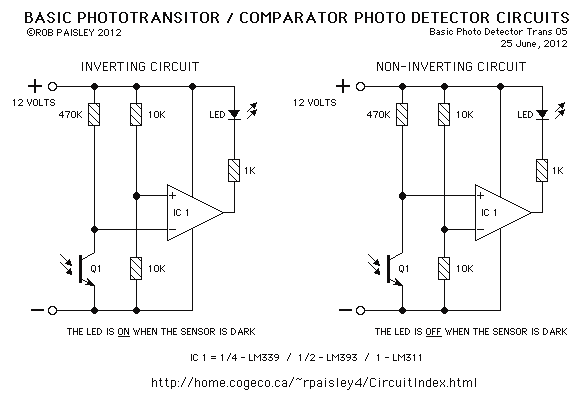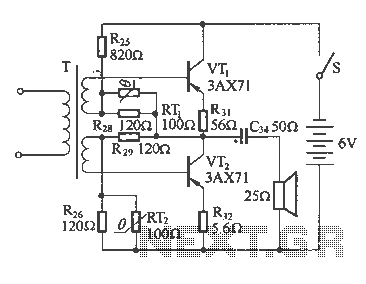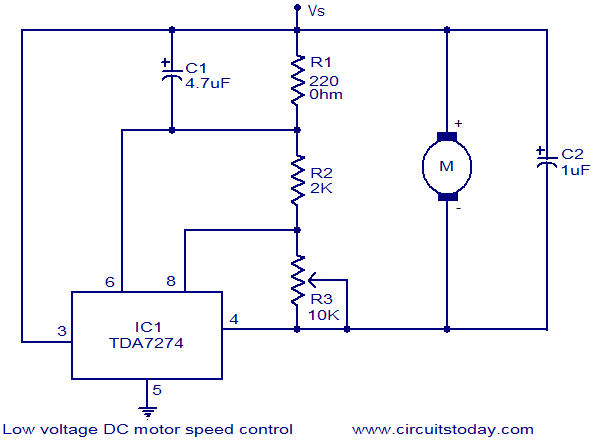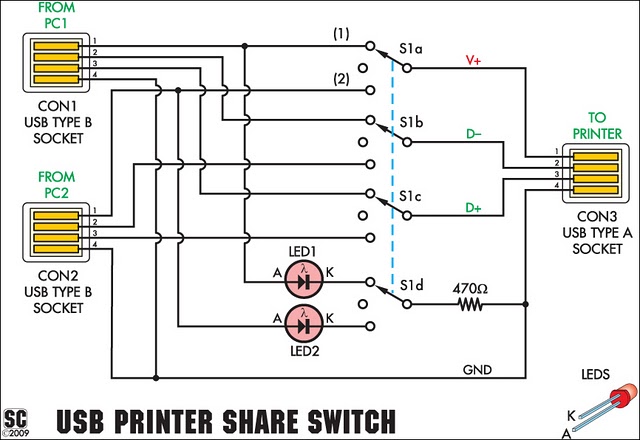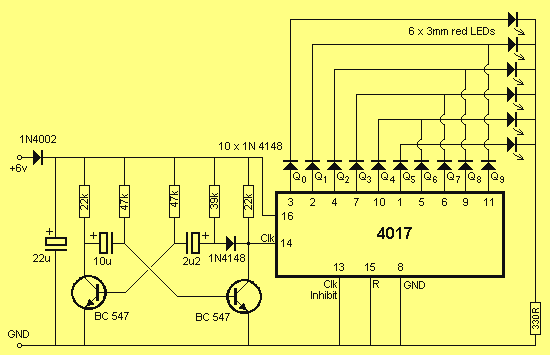
IC Controlled Emergency Light With Charger Circuit
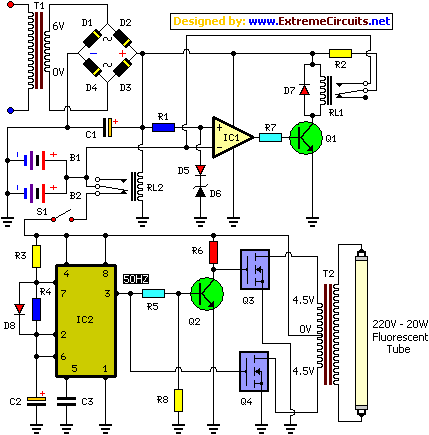
The circuit diagram of an IC Controlled Emergency Light with Charger, also known as a 12V to 220V AC inverter circuit, is presented here. This circuit features automatic activation of the light during mains failure and includes a battery charger with overcharge protection. In the absence of mains power, relay RL2 remains in a de-energized state, supplying battery power to the inverter section through its normally closed (N/C) contacts and switch S1. The inverter section utilizes IC2 (NE555) in astable mode to generate sharp pulses at a frequency of 50 Hz, which drive the MOSFETs. The output from IC2 is directly connected to the gate of MOSFET Q4, while the gate of MOSFET Q3 receives the signal after inversion by transistor Q2. Consequently, the power amplifier, constructed around MOSFETs Q3 and Q4, operates in a push-pull configuration. The output from the secondary of transformer T2 is capable of powering a 230-volt, 20-watt fluorescent tube. If illumination is not desired during a mains failure, switch S1 can be turned to the off position. The battery overcharge prevention circuit is designed around IC1 (LM308). The non-inverting pin is set to a reference voltage of approximately 6.9 volts, achieved using diode D5 (1N4148) and zener diode D6 (6.2 volts). The inverting pin of IC1 is connected to the positive terminal of the battery. When mains power is available, the output of IC1 remains high until the battery voltage exceeds 6.9 volts. In this condition, transistor Q1 is typically forward biased, energizing relay RL1. This allows the battery to charge via the normally open (N/O) contacts of relay RL1 and current limiting resistor R2. Once the battery voltage surpasses 6.9 volts (indicating overcharge), the output of IC1 goes low, de-energizing relay RL1 and halting further battery charging. It is advisable to mount MOSFETs Q3 and Q4 on appropriate heat sinks.
The circuit operates as a robust emergency lighting solution, ensuring that illumination is automatically provided during power outages while safeguarding the battery from overcharging. The NE555 timer, configured in astable mode, generates a consistent pulse width modulation signal, which is essential for driving the MOSFETs effectively. The push-pull configuration of the MOSFETs allows for efficient power conversion, enabling the inverter to produce a stable 220V AC output suitable for driving standard fluorescent lamps.
The inclusion of the overcharge protection circuit is critical for maintaining battery health and longevity. By monitoring the battery voltage and controlling the relay state, the circuit prevents damage that could occur from prolonged overcharging. This feature enhances the reliability of the emergency light system, making it suitable for various applications where dependable lighting is essential during power failures. Furthermore, the design can be modified to accommodate different load requirements or battery specifications, providing flexibility for diverse use cases. Proper thermal management through the use of heat sinks for the MOSFETs ensures that the components operate within safe temperature limits, thereby enhancing the overall performance and lifespan of the circuit.Here is the circuit diagram of IC Controlled Emergancy Light With Charger or simply 12V to 220V AC inverter circuit. The circuit shown here is that of the IC controlled emergency light. Its main features are: automatic switching-on of the light on mains failure and battery charger with over-charge protection.
When mains is absent, relay RL2 is in de-energized state, feeding battery supply to inverter section via its N/C contacts and switch S1. The inverter section comprises IC2 (NE555) which is used in stable mode to produce sharp pulses at the rate of 50 Hz for driving the MOSFETs. The output of IC2 is fed to gate of MOSFET (Q4) directly while it is applied to MOSFET (Q3) gate after inversion by transistor Q2.
Thus the power amplifier built around MOSFETs Q3 and Q4 functions in push-pull mode. The output across secondary of transformer T2 can easily drive a 230-volt, 20-watt fluorescent tube. In case light is not required to be on during mains failure, simply flip switch S1 to off position. Battery overcharge preventer circuit is built around IC1 (LM308). Its non-inverting pin is held at a reference voltage of approximately 6. 9 volts which is obtained using diode D5 (1N4148) and 6. 2-volt zener D6. The inverting pin of IC1 is connected to the positive terminal of battery. Thus when mains supply is present, IC1 comparator output is high, unless battery voltage exceeds 6. 9 volts. So transistor Q1 is normally forward biased, which energises relay RL1. In this state the battery remains on charge via N/O contacts of relay RL1 and current limiting resistor R2. When battery voltage exceeds 6. 9 volts (overcharged condition), IC1 output goes low and relay RL1 gets de-energised, and thus stops further charging of battery.
MOSFETs Q and Q4 may be mounted on suitable heat sinks. 🔗 External reference
The circuit operates as a robust emergency lighting solution, ensuring that illumination is automatically provided during power outages while safeguarding the battery from overcharging. The NE555 timer, configured in astable mode, generates a consistent pulse width modulation signal, which is essential for driving the MOSFETs effectively. The push-pull configuration of the MOSFETs allows for efficient power conversion, enabling the inverter to produce a stable 220V AC output suitable for driving standard fluorescent lamps.
The inclusion of the overcharge protection circuit is critical for maintaining battery health and longevity. By monitoring the battery voltage and controlling the relay state, the circuit prevents damage that could occur from prolonged overcharging. This feature enhances the reliability of the emergency light system, making it suitable for various applications where dependable lighting is essential during power failures. Furthermore, the design can be modified to accommodate different load requirements or battery specifications, providing flexibility for diverse use cases. Proper thermal management through the use of heat sinks for the MOSFETs ensures that the components operate within safe temperature limits, thereby enhancing the overall performance and lifespan of the circuit.Here is the circuit diagram of IC Controlled Emergancy Light With Charger or simply 12V to 220V AC inverter circuit. The circuit shown here is that of the IC controlled emergency light. Its main features are: automatic switching-on of the light on mains failure and battery charger with over-charge protection.
When mains is absent, relay RL2 is in de-energized state, feeding battery supply to inverter section via its N/C contacts and switch S1. The inverter section comprises IC2 (NE555) which is used in stable mode to produce sharp pulses at the rate of 50 Hz for driving the MOSFETs. The output of IC2 is fed to gate of MOSFET (Q4) directly while it is applied to MOSFET (Q3) gate after inversion by transistor Q2.
Thus the power amplifier built around MOSFETs Q3 and Q4 functions in push-pull mode. The output across secondary of transformer T2 can easily drive a 230-volt, 20-watt fluorescent tube. In case light is not required to be on during mains failure, simply flip switch S1 to off position. Battery overcharge preventer circuit is built around IC1 (LM308). Its non-inverting pin is held at a reference voltage of approximately 6. 9 volts which is obtained using diode D5 (1N4148) and 6. 2-volt zener D6. The inverting pin of IC1 is connected to the positive terminal of battery. Thus when mains supply is present, IC1 comparator output is high, unless battery voltage exceeds 6. 9 volts. So transistor Q1 is normally forward biased, which energises relay RL1. In this state the battery remains on charge via N/O contacts of relay RL1 and current limiting resistor R2. When battery voltage exceeds 6. 9 volts (overcharged condition), IC1 output goes low and relay RL1 gets de-energised, and thus stops further charging of battery.
MOSFETs Q and Q4 may be mounted on suitable heat sinks. 🔗 External reference
